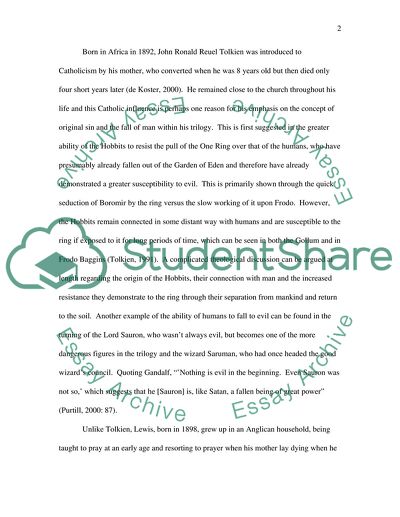Cite this document
(“Tolkien and Lewis: The Battle of Good over Evil Essay”, n.d.)
Retrieved from https://studentshare.org/literature/1539718-tolkien-and-lewis-the-battle-of-good-over-evil
Retrieved from https://studentshare.org/literature/1539718-tolkien-and-lewis-the-battle-of-good-over-evil
(Tolkien and Lewis: The Battle of Good over Evil Essay)
https://studentshare.org/literature/1539718-tolkien-and-lewis-the-battle-of-good-over-evil.
https://studentshare.org/literature/1539718-tolkien-and-lewis-the-battle-of-good-over-evil.
“Tolkien and Lewis: The Battle of Good over Evil Essay”, n.d. https://studentshare.org/literature/1539718-tolkien-and-lewis-the-battle-of-good-over-evil.


